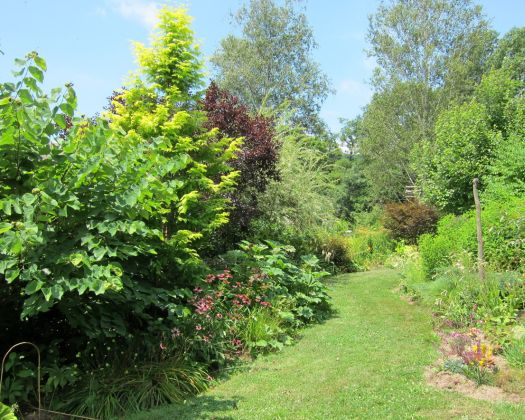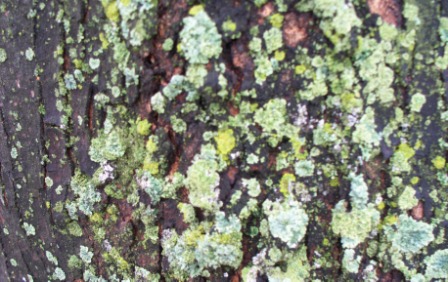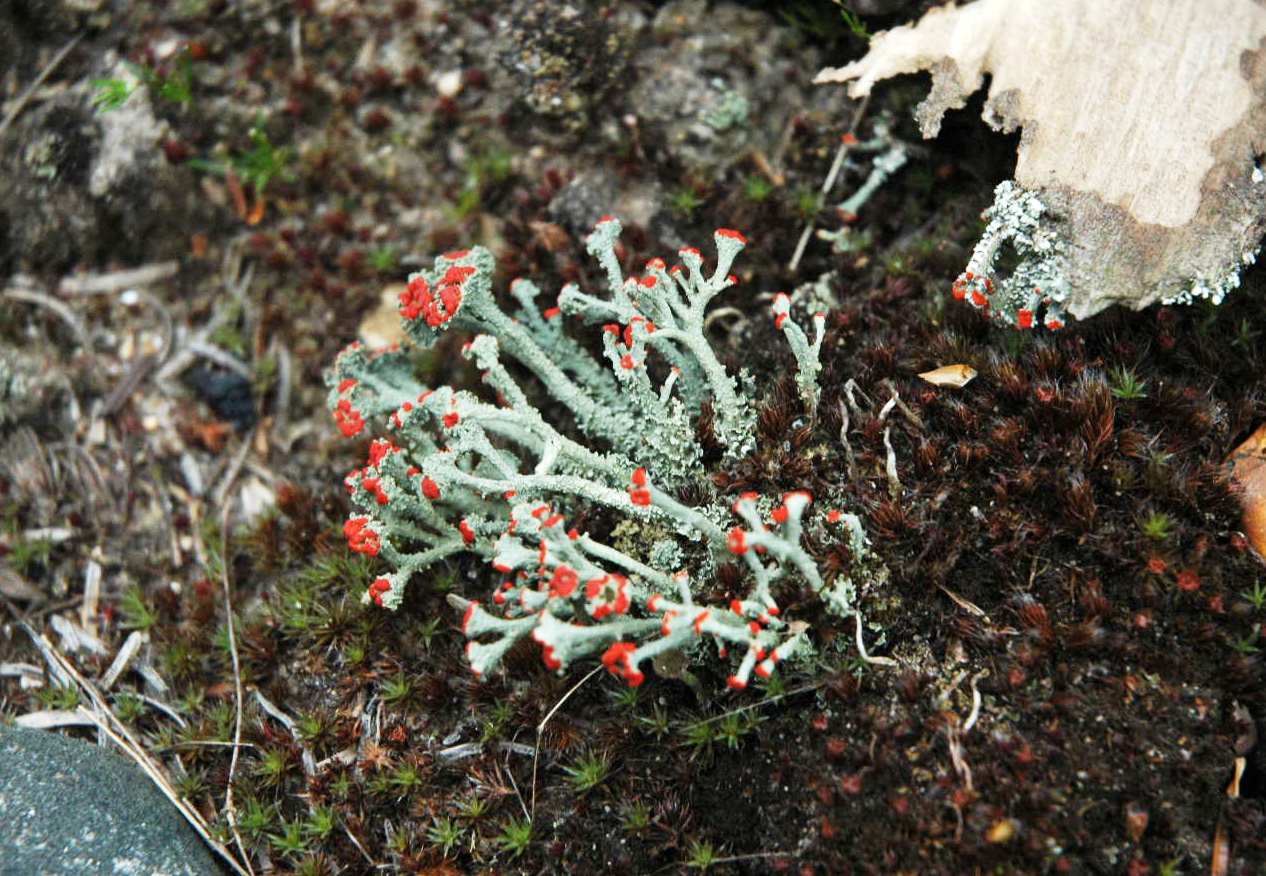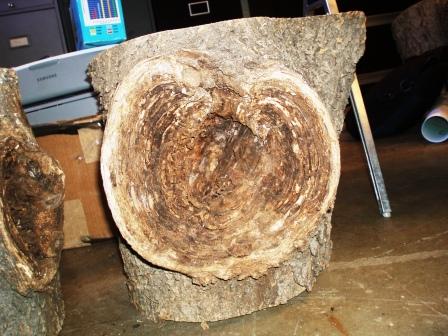I love Linda’s idea and there are some great comments – but y’all need to send her photo evidence of these gardening adventures/casualties to post! Would make me feel better. It doesn’t take much to get me going on dubious stuff I have done, gardening or otherwise.
Was just up to Northern Virginia to help with Fairfax Master Gardener training (at the fabulous Merrifield Garden Center). My talk was on "site analysis and plant selection." As I looked through my digital photos to illustrate the points made, I came across several "ahem" moments, that lead to the "do what I say, not what I do" caveat (but usually gets a few giggles and snorts).
Here’s a classic:

East side of our "yarden." The only preexisting material was the pair of white birch in the background and the purple-leaf plum. Please direct your attention to the left side of the border.
We built the bed in spring of 2008.
Inserted a very happy redbud, (7 gallon), Metasequoia glyptostroboides ‘Ogon’ (my pride and joy) ($$$ for a 15 gallon specimen), Salix x ‘Hakuru Nishiki’ standard (7 gallon lollipop), underplanted with some sun/part shade perennials and one little Tetrapanax root dug from a friend’s garden. There was also a Calycanthus raulstonii ‘Hartledge Wine’ tucked between the redbud and dawn redwood but you can’t see it from this angle.
The sun perennials took off, and it looked AWESOME.
Coming up on this border’s 4th anniversary, things are a bit…crowded. Only a few Echinacea remain to fight for the morning sun. The Tetrapanex just loves the light sandy loam and has gone ape-doo. The Phyllis Diller-esque Salix standard, despite my pruning it back each year, is about to get the chain saw. ‘Hartledge Wine’ got relocated this fall.
I think this is a common gardener’s dilemma. Maybe I just can’t picture my pet dawn redwood reaching 50′ tall, like it probably said on the tag I ignored. The upside is…"lush." And there needs to be a new bed built to relocate the sunny stuff (yay!). I’m actually a pretty patient gardener; and I even distinctly recall with this particular bed I was all "Look how far apart I’m placing these! Suuuper genius!" Feel free to giggle or snort.









